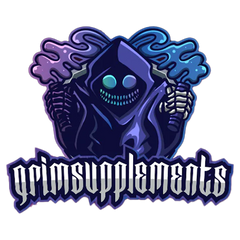What are Peptides? Benefits, Usage, and a Guide to Choosing the Right One
Peptides are organic compounds formed by the combination of amino acids into short chains. These molecules, considered the building blocks of proteins, play a role in numerous processes, including the musculoskeletal system, immunity, skin integrity, and energy metabolism. Today, peptide supplements are frequently preferred by those looking to support athletic performance, accelerate recovery, and create targeted wellness routines.
Although the body naturally produces peptides, factors such as a busy schedule, poor nutrition, and aging can affect this cycle. Therefore, choosing reliable products with clear labels and ingredients, along with determining the appropriate dosage, duration, and timing, will directly improve results. At the end of the page, you'll also find instructions on how to use and frequently asked questions.
What Do Peptides Do?
The effect profile varies depending on the type of peptide and its intended use. Potential benefits that stand out generally include:
- Muscle development and strength performance: It can support the efficiency of resistance training and positively affect recovery between sets.
- Recovery and tissue repair: It can help establish a more balanced recovery routine during challenging training periods.
- Body composition management: It can be preferred in programs that support the reduction to the target weight while preserving lean mass.
- Sleep and energy patterns: Some protocols are designed to achieve the goals of quality sleep and daytime vitality.
- Skin and general well-being: Peptide formulations are available that support the skin barrier and target a vibrant appearance.
For a more targeted selection, you can explore the following common peptide types. Each one has different usage timing and stacking strategies.
Common Peptide Types and Brief Characteristics
BPC-157
It's frequently used in endurance sports and recovery routines during periods of high volume. Programs are shaped by training intensity and seasonal goals.
TB-500 (Thymosin Beta-4 fragment)
It finds its place in protocols focused on circulation and overall movement efficiency. It is often addressed through periodic usage plans.
CJC-1295 & Ipamorelin (Stack)
It's a popular dual-programmable combination for sleep quality, recovery, and body composition goals. Timing (especially in the evening) and duration consistency are key.
GHK-Cu
It's prominent in skin care; its topical forms aim to support the skin barrier. In personal care routines, attention is paid to ingredient compatibility and frequency of application.
How to Use Peptide Supplements?
Peptides are available in various forms, including oral (powder/capsule), topical (on the skin), and other forms that vary depending on the application method. The most practical approach is to choose the form that is most easily integrated into daily life. Consider the following points when creating a program:
- Goal setting: First, the goal (strength, definition, recovery, skin care) is clarified; product selection is made accordingly.
- Timing: A consistent schedule with sleep, pre/post workout, and meal patterns impacts performance.
- Consistency: Most programs require at least a few weeks of regular use for meaningful feedback.
- Ingredient compatibility: When layering products that serve the same purpose, consider total dosage and ingredient overlap.
- Label tracking: Each product's service scale, cycle time, and accompanying recommendations may vary; follow the label.
When setting up your program, you can get ideas from the treatment and stack examples on the site and compare the content/service details on the product pages. Beginners often find it more sustainable to progress with simple plans focused on a single goal.
What to Consider When Choosing a Peptide?
- Transparent label: Contents per serving, total number of servings, and auxiliary ingredients must be clear.
- Source and form: Peptides with the same name may have different production processes; check the brand's approach to quality.
- Relevance to purpose: Don’t compare a “recovery-focused” product with a “skincare-focused” product with the same expectations.
- Feedback: Product reviews and community insights are valuable for practical use experience.
To make your choice easier, browse our curated collection of the most effective peptide supplements . Here you can filter by target and quickly compare ingredient/serving details in the product cards.
FAQ – Frequently Asked Questions About Peptides
What is the difference between a peptide and a protein?
Proteins are much longer chains of amino acids, while peptides are shorter chains. Therefore, their intended uses and product formulations differ.
How long does it take to feel the effect?
This timeframe varies depending on the type of peptide, the consistency of the program, and your lifestyle. Most users see clearer results within a few weeks.
Who prefers peptides?
It is frequently preferred by strength/hypertrophy-focused athletes, those who want to support recovery during intense work hours, and users who want to deepen their skin care routine.
Single product or combination to start?
Beginners often start with a simple product focused on a single goal; then move on to combinations depending on the goal.
What is the most critical point in use?
Consistent timing and adherence to the label's recommended serving size. Plans that fit into your daily routine yield the most consistent results.
Conclusion
Peptides offer flexible and targeted options for performance, recovery, and well-being. Prioritize clear labels, ingredient compatibility, and a sustainable usage plan when choosing the right product for your needs. To get started, compare the peptide supplements in this collection to set a clear goal, then shop with confidence.









